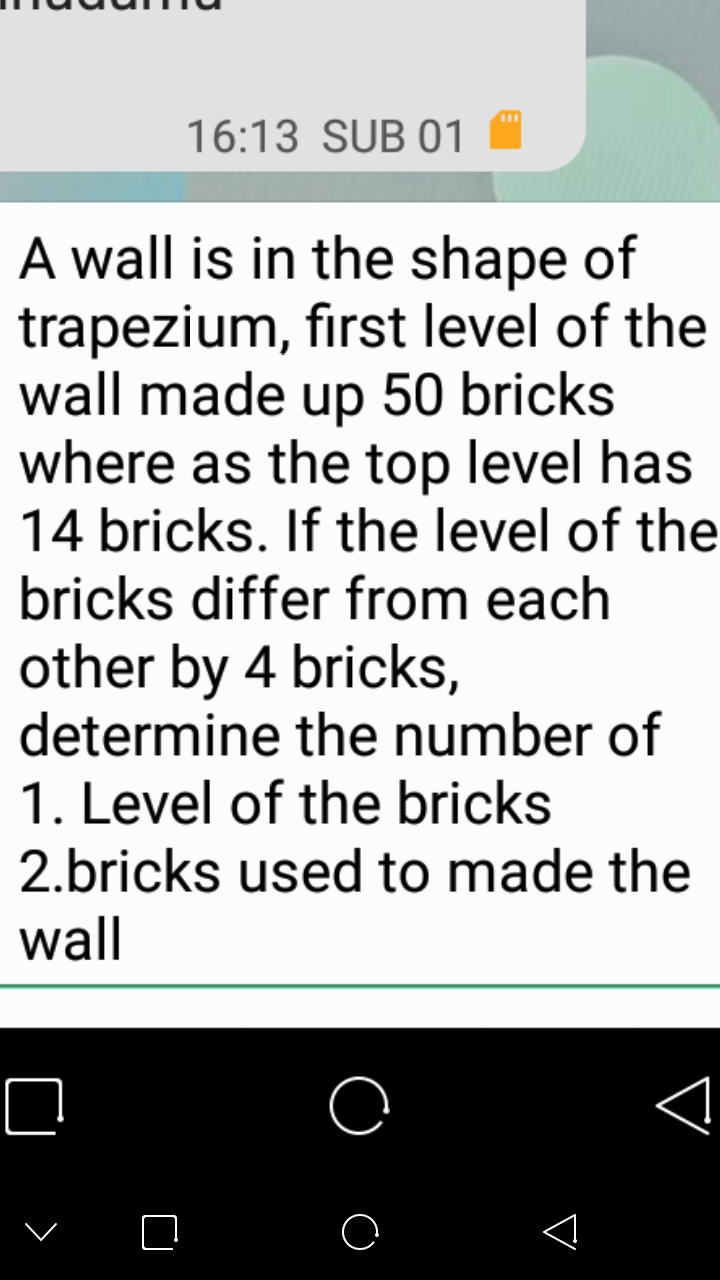
Question and Answers Forum
OthersQuestion and Answers: Page 70



|
Question and Answers Forum |
OthersQuestion and Answers: Page 70 |
| prove that ∣((e^z −e^(−z) )/2)∣^2 +cos^2 y=sinh^2 x when z=x+iy |
| Evaluate ∫(((27)/(x^3 −6)))^(1/3) dx |
| find a maclaurine series solution to the differential equation up to the term in x^4 . (dy/dx) − x = xy if y = 1 when x = 0. |
| find Laplace transform t^3 . cos 4t |
| x amd y are imtegers. how many possible solitions do the eqiation has x^2 −10y^2 = ±1 |
| Evaluate ∫_(−1) ^1 (1/(x−1)) dx |
| ∫_0 ^(π/4) tanh 2x dx |
| Given that forces F_(1 ) and F_2 position vectors r_(1 ) and r_2 F_1 = (2i + 3j)N r_1 = i + 2j F_2 = (αi−7j) N r_2 = 3i + 4j Given that these system of forces form a couple find the value of α. |
| A particle exhibits simple hamornic motion such that (d^2 x/dt^2 ) + 4x = 0 Calculate the period of the ocsillation |
| find in the form y= f(x) the general solution of the differentail equation (d^2 y/dx^2 ) −(dy/dx)−6y = e^(3x) |
| (1/(2e^(−x) −1)) > (2/(e^(−x) −2)) |
| solve ∣2x−1∣=3⌊x⌋+2{x} |
| A complex number z is defined by z = (1/2)(cos θ + isin θ),such that z^n = (1/2^n ) (cos nθ + isin nθ) Using De Moivre′s theorem,or otherwise, show that (i) Σ_(r=0) ^∞ (1/4^r ) sin 2rθ is a convergent geometic progression. (ii) Σ_(r=0) ^∞ (1/4^r ) sin 2r = ((14 sin 2θ)/(17−16cos 2θ)) |
| A sequence (U_n ) is defined reculsively as U_o = (1/2) and U_(n+1) = (2/(1 + U_n )) for n ∈ N a) Show by mathematical induction that all terms in the sequence are positive. b) Given that the sequence (U_n ) is convergent, show that the limit,l, is a solution to the equation x^2 + x−2 = 0. Hence find l c) Given that (V_n ) is a sequence of general term such that V_n = ((U_n −1)/(U_n +2)) , ∀ n ∈ N. show that (V_n ) is convergent and determine its limit. hence deduce the convergence of the sequence (U_n ). Please recommend me textbooks for this topic even youtube vids please |
| ((cos x−sin x)/(√(1+sin 2x))) = sec 2x−tan 2x prove it |

|

|
| A company paid a total dividend of K12 600.00 at the end of 2018 on 6000 shares. If Freddy owned 200 shares in the company, how much was paid out in dividents to him? |
| If z,w ε C and ∣z∣>1, ∣w∣<1 so ∣((z−w)/(1−z^− w))∣>1, demostrate thr veracity of the statment. (V or F) |
| ∫x (√((√2) x−(√(2x^2 −1)))) dx |
| write out the general summation formula for the maclaurin series expansion for (1/2) (cos x + cosh x) |
| Use exponential representation of sin θ and cos θ to show that a) sin^2 θ + cos^2 θ = 1 b) cos^2 θ − sin^2 θ = cos2θ c) 2 sinθ cosθ = 2sin2θ. |
| I think it will be ∫_0 ^(π/4) (dx/(√(1+tanx))) ≈∫_0 ^(π/4) (dx/(√(1+x))) =(𝛑/4)−(1/2).(1/2).((𝛑/4))^2 +((1.3)/(2.4)).(1/3).((𝛑/4))^3 −((1.3.5)/(2.4.6)).(1/4)((𝛑/4))^4 +.... |

|
| any methods to sketch these curves r = a(1−cosθ) r= a + b cosθ a>b r= a + bcosθ a<b |